Liyang Zhang‘s master’s thesis Geographies of Urban Filth rethinks the spatial and social constructs of dirt and cleanliness through an intervention at the North Toronto Wastewater Treatment Plant. Her thesis has been selected as a finalist for Azure’s AZ Awards in the categories of Environmental Leadership and A+ Award for Student Work.
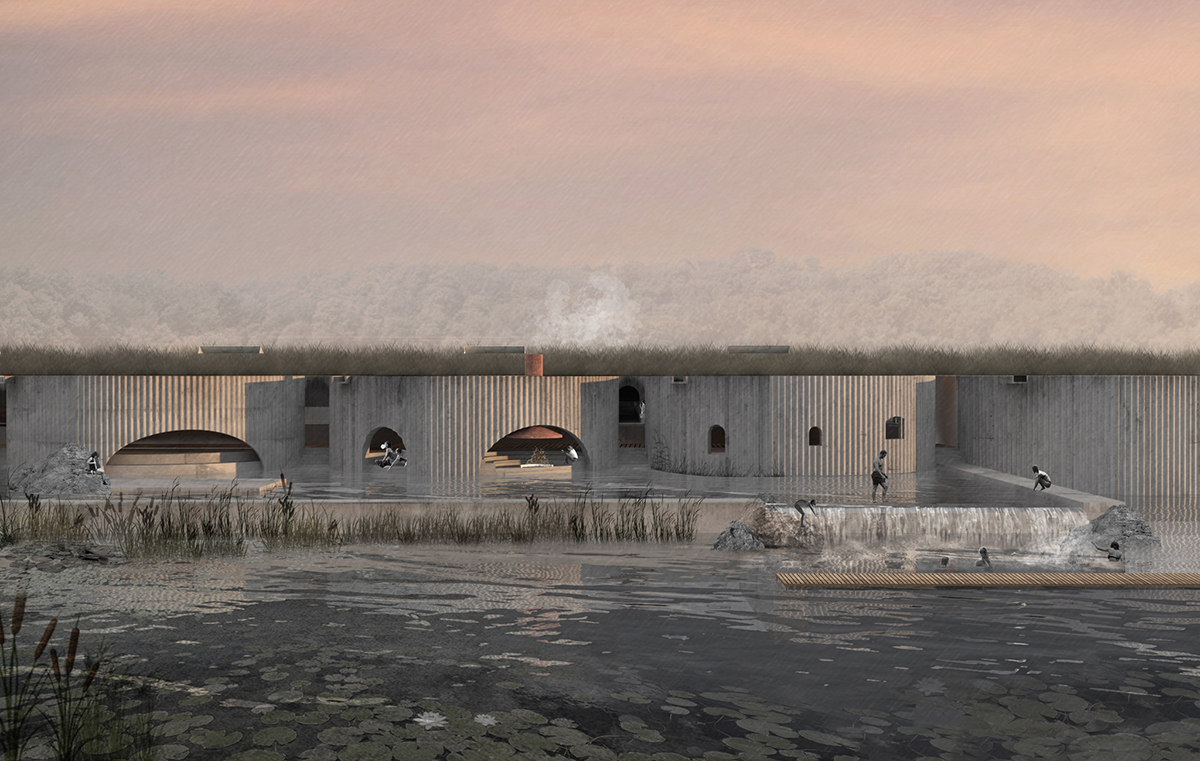
Wetland pools
The thesis studies how our cultural understanding of dirt and cleanliness are bound to issues of class and race and how they are manifested within urban and spatial design. Boundaries are formed between clean and dirty, familiar and foreign, us and them, through the rejection of matter that is disturbing or threatening to us. The city carries with it multitudes of identities, consequently forming divided groups and communities within spaces of belonging and exclusion. Thus, the thesis proposes a theoretical approach which questions our current conventions and practice of categorizing spaces, unearthing and bringing us in touch with the rejected ‘other’ within the city and within ourselves.
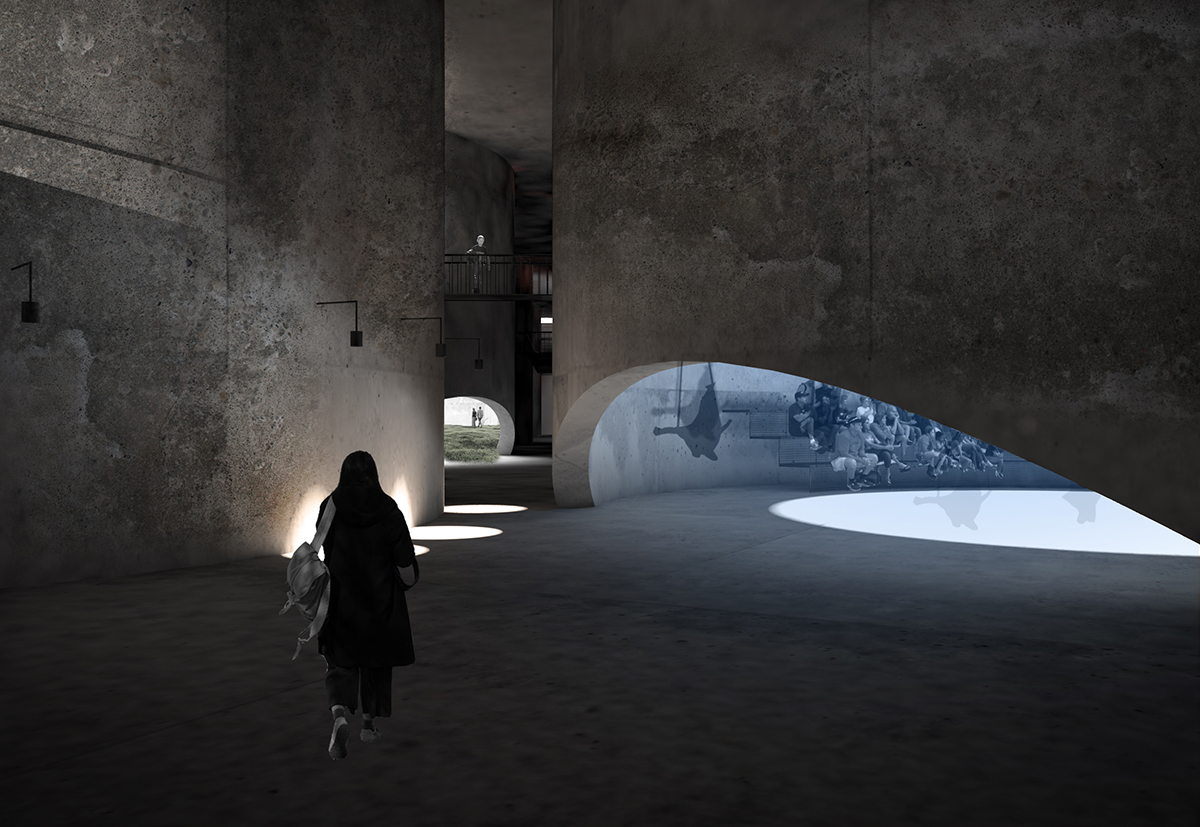
Underground digestors
This thesis grounds itself on existing ideas of identity and otherness by Julia Kristeva, R.D Laing, Krzysztof Wodiczko and Mary Douglas. In Julia Kristeva’s essays on abjection, she describes abjection as the discomfort caused when impurities and contamination become a threat to one’s own identity and order. It is when borders that are meant to protect us from the other, become ambiguous. The inherent fear of the abject breeds an obsession for purity which erases opportunities to engage with and understand those other to ourselves.
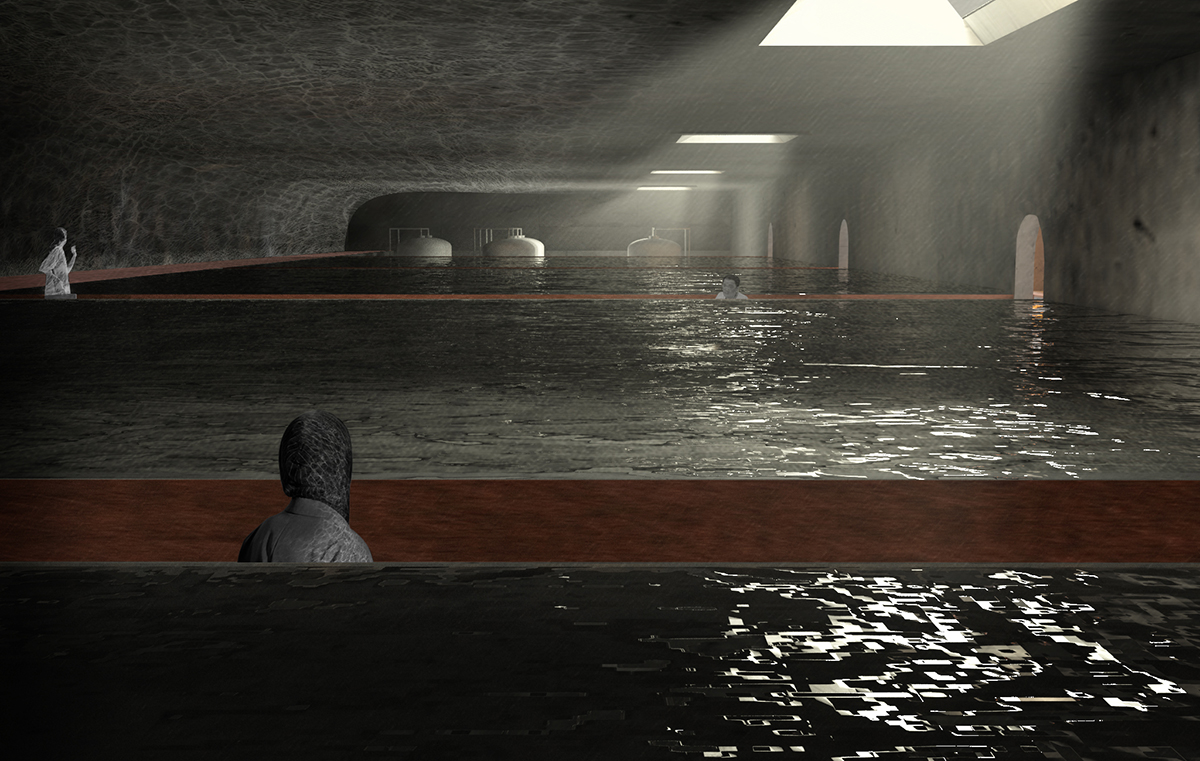
Water filtration
These ideas of the self and the other, cleanliness and dirt, are explored through the intervention of the North Toronto Wastewater Treatment Plant central to three physically and socially disconnected neighborhoods of different income levels and ethnic groups. The treatment plant sits hidden and disguised below city level within the Don Valley ravine, collecting and filtering wastewater from these neighboring communities and releasing it back into the Don Valley River.

Existing water treatment plant
Mary Douglas examines our cultural understanding of dirt asserting that dirt only exists through our categorization of space. Materializing these ideas into spatial design, the design proposal seeks to challenge the tension that the pure vision of the city has with its dirtier and wilder counterpart which is the wastewater treatment plant, the ravines, and the sewers. The design proposes the breaking down of boundaries between perceived “clean” and “dirty” spatial and social constructs with the insertion of a public space and bath within the wastewater treatment facility. The departure from the safety of the familiar city, and entrance into ambiguous marginal territories, allows one to experience moments of vulnerability where the questioning of one’s own identity and reflection of one’s own strangeness allows for a deeper understanding of the other. With the appropriation of the wastewater treatment plant, the strangeness of oneself within the foreign environment allows the stripping of borders to confront the strangeness of another.
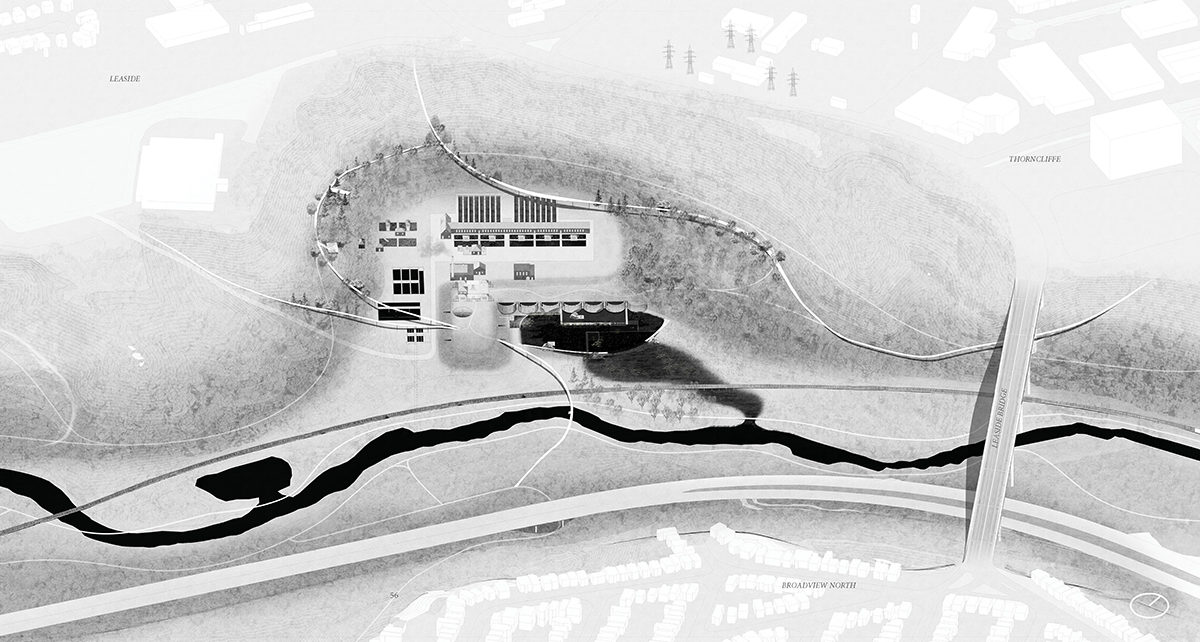
Site plan
There are three major elements within the design, the first is the connecting element that brings the neighborhoods together towards the wastewater treatment plant. The second is the combined swimming pool and wetland which receives discharged effluent from the addition of a tertiary water treatment space. It is where we witness, encounter, and fully immerse ourselves within the abject. The third element supports the swimming pool activities with the appropriation of the decommissioned underground digestors as a space for arts and performance as a celebration of the strangeness of the site and ourselves.
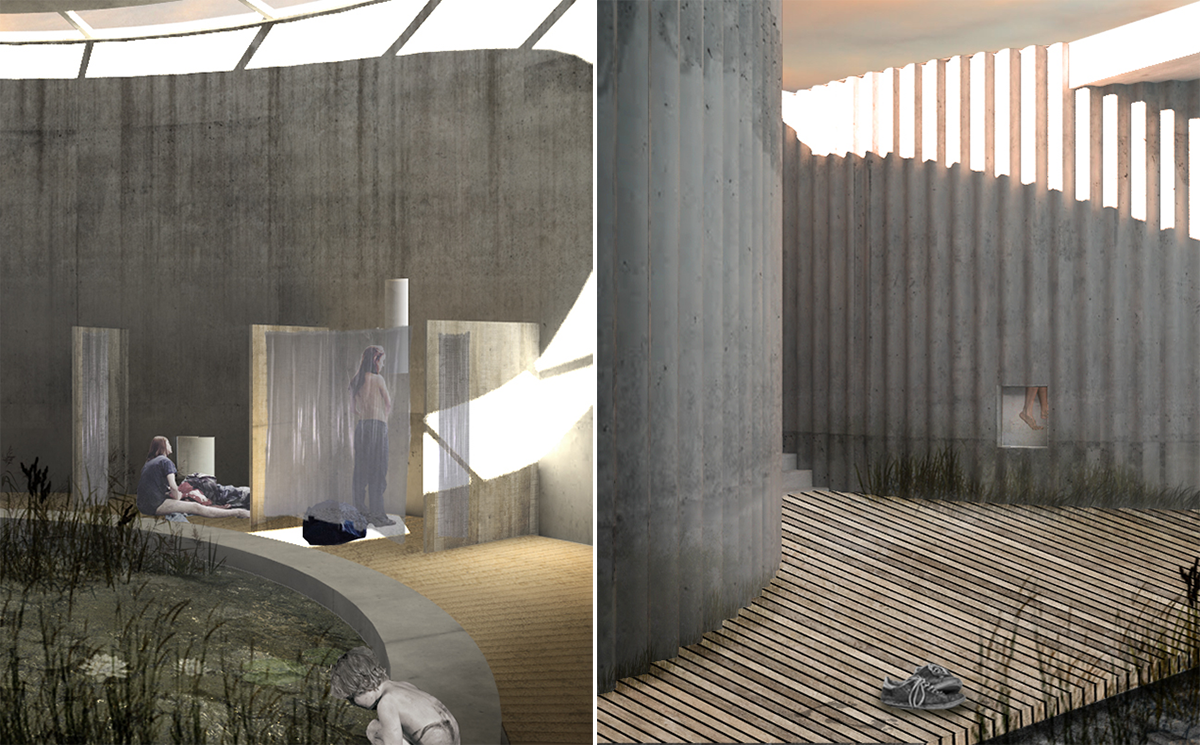
Change rooms
The choreography through the site is not meant to force interactions between others but rather to provide a shift in perspective in how we perceive dirt or cleanliness, strange or familiar, in order to provide opportunities for meaningful interaction as a negotiation of differences. The interconnectedness and ambiguity of dirty and clean spatial categorization enhance moments of vulnerability allowing each person to reflect on, question, and perhaps rethink the ways we perceive those we see other to ourselves. The thesis asks how architecture can aid us in recognizing these categorizations and live with and as an other.
Liyang’s thesis can be found in full on UWSpace.
As a finalist for Azure’s AZ Awards, this design thesis can also be recognized by the People’s Choice Award. Public voting runs online from April 4 though May 3, 2019.




Leave a Reply